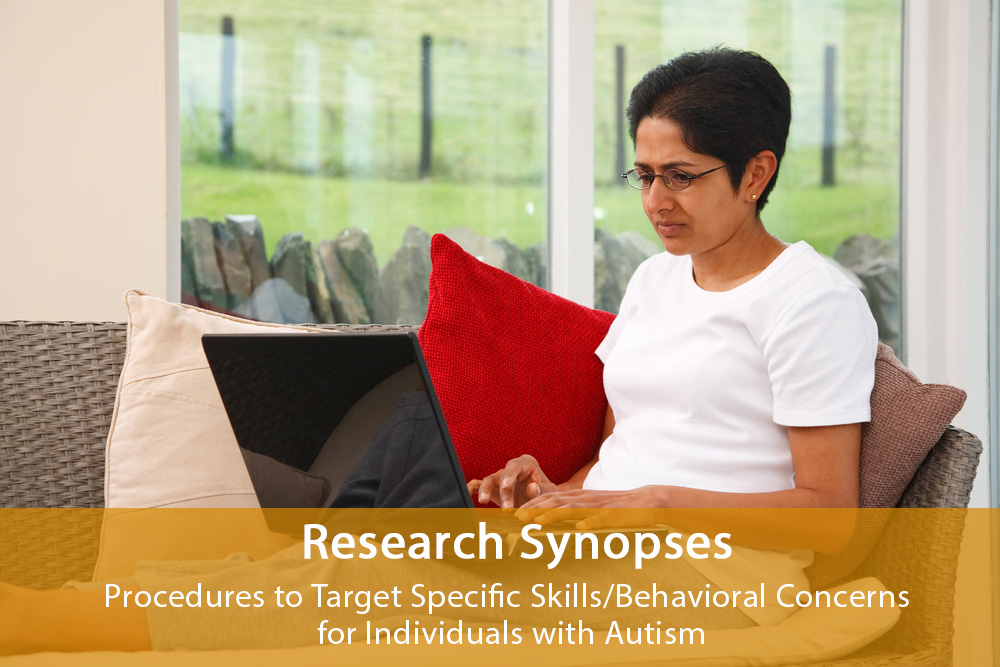Kaale, A., Fagerland, M. W., Martinsen, E. W., & Smith, L. (2013). Preschool-based social-communication treatment for children with autism: 12-month follow-up of a randomized trial. Journal of the American Academy of Child & Adolescent Psychiatry, 53(2), 188-198.
Reviewed by Casey L. Nottingham, Caldwell University
Why research this topic?
 Children of typical development frequently engage in social communication that includes joint attention skills such as looking or pointing to things in an environment to share an experience with another person. Skill deficits in this area are a defining feature of autism spectrum disorder (ASD) and as such are present in all individuals with this diagnosis. The authors of the current paper previously reported on the short-term effects of a treatment targeting social communication for preschoolers with ASD. The purpose of the current study was to extend the previous report by evaluating the long-term effects of the treatment on social communication, language, and social functioning. An additional purpose was to examine potential individual characteristics that may impact treatment effects.
Children of typical development frequently engage in social communication that includes joint attention skills such as looking or pointing to things in an environment to share an experience with another person. Skill deficits in this area are a defining feature of autism spectrum disorder (ASD) and as such are present in all individuals with this diagnosis. The authors of the current paper previously reported on the short-term effects of a treatment targeting social communication for preschoolers with ASD. The purpose of the current study was to extend the previous report by evaluating the long-term effects of the treatment on social communication, language, and social functioning. An additional purpose was to examine potential individual characteristics that may impact treatment effects.
What did the researcher do?
The current study was a 12-month follow-up to a randomized controlled trial (RCT). The RCT evaluated a preschool-based social communication treatment for children with ASD. Participants were 61 children with ASD ranging in age from 24 to 60 months and attending integrated preschools in the community. The children were randomly assigned to one of two groups: (a) social communication treatment plus preschool program or (b) preschool program only (i.e., control group). The social communication treatment included procedures modified from the Joint Attention, Symbolic Play, Engagement, and Regulation intervention developed by Kasari and colleagues (http:// www.kasarilab.org/treatments/jasper/). In this treatment, opportunities are provided for the children to initiate bids for joint attention and maintain joint engagement, with an adult by following the child’s lead, using novel and appealing toys, providing prompts when needed, creating play routines, and talking about what the child was doing. Counselors attended a workshop and rehearsal seminars to learn the treatment and then trained the preschool teachers who ran sessions with the children. Treatment sessions were 20 minutes (i.e., 5 min training and 15 min floor play) and were held twice daily; these sessions lasted 8 weeks. Several measures were used to assess the target behaviors of interest in addition to expressive language skills, nonverbal IQ, and sociability. Those included the Mullen Scales of Early Learning (MSEL), the Norwegian standardization of Reynell Developmental Language Scales (RDLS), the Social Communication Questionnaire: Current Form (SCQ:C), and the Early Social Communication Scales (ESCS). Videos of teacher-child and mother-child interactions were also scored for instances of joint engagement.
What did the researchers find?
Sixty of the 61 participants from the original study were included in the follow-up. The authors reported that there were no changes from end of treatment to follow-up in the type or content of the children’s preschool programming. However, the children in the treatment group performed better than the control group at the 12-month follow-up on two of the five social communication goals (i.e., more initiation of joint attention and more time in joint engagement during interaction with mothers). The authors found no significant differences between groups on language measures or social functioning and communication. Ratings of higher sociability correlated with increases in child initiations of joint attention during mother- and teacher-child interactions for the treatment group.
What are the strengths and limitations of the study?
The authors selected an important goal to evaluate. They examined a target skill – social communication or joint attention – that is a core deficit of individuals with ASD. Additional strengths are that the authors included a large number of preschoolers with ASD and treatment was provided in a community preschool. Additionally, the authors reported findings of a follow-up evaluation; evaluations such as these are important to make conclusions about the durability of treatment effects across time. Along with these strengths, several limitations should be noted. The services received during the follow-up period were not measured and may have differed among children in and across both groups. Also, details about treatment procedures were limited in the current report and in the prior report on outcomes at the end of treatment; therefore, it is unclear if other researchers would be able to replicate the procedures or if portions of the procedures could be effective alone rather than in a treatment package. Additional research would be needed to draw conclusions about effective treatments for these targets.
What do the results mean?
The authors showed that teachers in community preschools could implement a specialized intervention for social communication in ASD and that this teacher-implemented intervention led to improvements in some aspects of social communication in a large sample of young children with ASD. However, additional research is needed to examine the replicability of the treatment procedures. In addition, because treatment benefits were observed on only a subset of the outcome measures, additional research is needed to determine how to obtain broader changes in social communication.
Citation for this article:
Nottingham, C.L. (2016). Research review: Preschool-based social-communication treatment for children with autism: 12-month follow-up of a randomized trial. Science in Autism Treatment, 13(3), 9-11.

